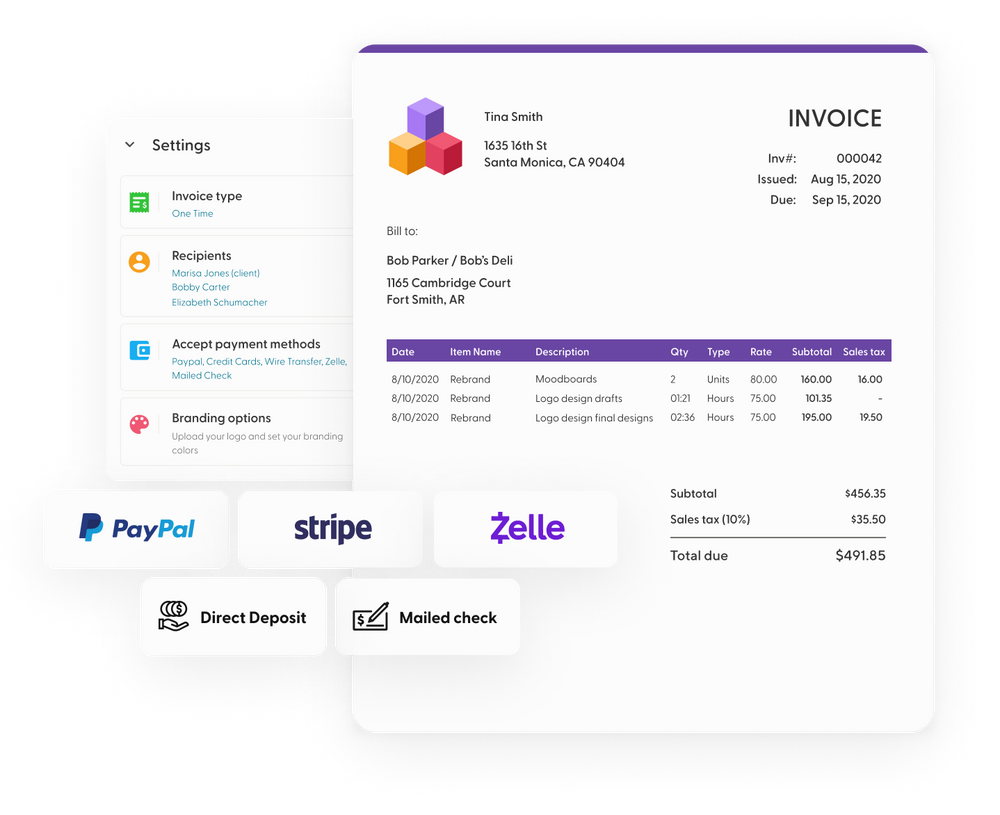Did you know?
- B2B businesses spend an average of 13% of their total revenue on marketing.
- In 2021 the total marketing spending in the US went past the $250 billion mark.
It is clear that businesses are spending more on marketing as they seek to increase brand awareness, improve sales and enhance customer loyalty and retention. However, besides spending more on marketing, you also need to know how to develop the best marketing budget.
This article explains everything you need to know about budgeting for your marketing strategies and provides step-by-step directions for creating a marketing budget.
Let's start by defining a marketing budget!
What is a Marketing Budget?
A marketing budget is a document that outlines the amount of money that a business plans to spend on its marketing campaign.
A marketing budget outlines the amount you plan to dedicate to your marketing team to promote your goods and services. It clearly shows how much you plan to spend on different aspects of marketing, such as paying for ads on different platforms.
A good marketing budget should be as comprehensive as possible by outlining everything you plan to spend for long- and short-term marketing. Most businesses prefer to develop an annual marketing budget, but it is also possible to make quarterly or even monthly marketing budgets.
It is important not to confuse marketing and advertising budgets. An advertising budget will only outline how much you plan to spend on advertising, but a marketing budget is more comprehensive since it includes all areas of your marketing plan.

Benefits of Having a Marketing Budget
A marketing budget is essential for showing where you spend your business revenues when balancing your accounting books. However, it has more benefits to your business than this, and here is an overview of the main ones:
1. It ensures proper marketing campaigns funding
Whether you want to run digital marketing or use more traditional strategies like broadcasting and print ads, you must fund it properly to ensure success.
If your marketing department is not well funded, you will face common issues like insufficient reach, which can affect your sales and revenue greatly
2. Proper marketing strategy execution
A marketing budget is very useful for effectively executing your marketing strategies. When you have a dedicated budget for marketing, your marketing team will know how much money to allocate to important things like marketing communication, staff salary, and ad design.
Proper planning ensures nothing is left unfunded, increasing the likelihood of your marketing plan succeeding.
3. Helps align marketing strategies with business goals
A marketing budget provides an easy way to align your marketing strategy with your business goals. Since you already know what goals you want to achieve, you can dedicate more funds to marketing spending that can help attain them.
For example, if one of your main business goals is to increase lead generation, you can dedicate more money to marketing strategies that help with this, like social media ads.
4. A budget helps you stay on track
It is easy to under or overspend on your marketing when you do not have a specific marketing budget. A budget ensures you can account for each dollar since it will be dedicated to a particular element in your marketing campaigns.
This way, it will help you stay on track with your marketing objective, so you will be able to come up with more accurate future projections for your marketing.
5. It helps you measure marketing success
A marketing budget can also be a useful tool for measuring marketing success. By comparing your actual expenditure to the projected costs, you can measure how effective your marketing has been for the financial year.
If you can measure marketing success, it becomes easy to adjust your marketing tactics to ensure greater success for your business.
How to Create a Marketing Budget
Now that you know what a marketing budget is and why it is important for your business, another crucial thing to understand is how to develop one.
And whether you are using a marketing budget template or crafting everything from scratch, here are the main step you have to follow:
Step 1: Come up with short and long-term marketing goals
Before anything else, you will need to come up with marketing goals. Make sure you clearly outline both short and long-term goals, as this will help you determine how much money to allocate to each category.
Some market research is often useful here as it will allow you to identify what your competitors are doing and what you need to work on to gain some advantage.
Short-term goals can be simple things like getting a few more comments on your social media ads or decreasing the bounce rate for digital ads. The long-term goals will be more substantial such as improving your content marketing strategy to get more of your marketing content on the first page of google search results.
What you spend and where you spend when marketing should always depend on what you want to achieve.
Step 2: Develop buyer personas
All marketing teams need to understand their target audience to effectively promote their products and services. Hence, as you determine your marketing spend for the year, you should not skip this important step.
A buyer persona is a fictional representation of your target audience for your offline and digital marketing strategies. You will need to gather information such as buyer age, location, and income when creating buyer personas.
The best way to develop a buyer persona is by taking surveys of your current customers and interviewing people that show interest in your products and services. Tools like Google Analytics or Facebook Insights can also be very useful here.
It is also important to understand the buyer's journey, as this will give you a clear idea of how they are likely to interact with your marketing. With this in mind, it will be easy to determine where you need to focus more of your marketing budget to reach more customers and improve their journey through the sales funnel.
Step 3: Choose the appropriate market channel
A good marketing strategy will involve a multi-channel approach, ensuring you get a wider reach. However, it is still important to choose the specific channel you intend to use when coming up with a marketing budget.
Your buyer personas will also be very useful here as they will give you an idea of where you need to be focusing your marketing efforts. Going where your buyer personas are will ensure you generate higher returns on your marketing expenditure.
Here is an overview of the common channels that work for both big and small businesses:
1. Digital marketing channels
Social media marketing is one the most common forms of digital marketing. Other popular ones include Google ads, email marketing, online content marketing, and search engine optimization.

2. Inbound marketing channels
Inbound marketing channels will often overlap with digital marketing channels, including SEO, YouTube videos, and eBooks.
3. Outbound marketing channels
Email marketing is the easiest outbound marketing channel to track, and so it is what most marketers will use, and you have to combine it with inbound marketing channels for the best outcomes. Other options here include TV, direct mail, and trade shows.
4. Brand awareness marketing channels
Brand awareness campaigns are a marketing channel on their own. However, they will typically overlap with all three above, with the most common options here including social media advertising and video marketing/advertising.
Step 4: Consider hidden marketing costs
Hidden marketing costs can be a huge problem for small businesses, given their limited marketing budgets. Therefore, it is vital to consider these hidden costs as you are crafting yours and calculating your marketing expenses.
While most marketing budgets cannot plan for all these hidden marketing costs, if you anticipate them, you can set some extra funds in your budget to account for them.
For example, when budgeting for a product promotion campaign, it is easy to overlook hidden costs such as market research and marketing message testing. Hence, even if these costs do not seem core to your marketing campaign, make sure you have some extra amount that can cater to them when they arise.
Step 5: Spend smart
A good marketing budget should not focus on spending more money but rather ensure you spend your marketing money smartly.
By organizing all your marketing expenses, you can tell what you need to prioritize and allocate more funds to and what should not be a priority. Cross-checking your marketing expenditure with the results you are getting should give you an idea of what to prioritize.
For example, if you are getting more leads from your social media marketing campaigns and very little from email marketing, spending more on social media will be smart.
Also, remember that all the expenses you list when crafting your marketing plan are not mandatory. Rather, they are meant to guide you and ensure you do not overlook anything important. And so, it is still up to you to determine the smartest way to allocate your marketing resources.
Step 6: Remember to measure ROI
Another key element of the marketing budget planning process that you should never overlook is measuring the return on investment (ROI).
As you plan for your money, look at the amount you spent on different items from the previous years.
Whatever items that brought in more returns deserve an increase in allocation so you can gain even more. However, those with low or negative ROI should be looked at more keenly before allocating further resources.
Keeping Track of Marketing Budgets
Coming up with a data-driven marketing budget is one thing, but tracking it is equally important. Tracking the money you spend in marketing is the key to measuring its success and also helps you determine the areas you need to improve or adjust.
The good news is that there are dozens of effective marketing tools that you can use to track your marketing budget. But here are the easiest and most common methods.
1. Use Microsoft Excel
Most businesses will use Excel to create and keep track of their marketing and other small business budgets.
Excel offers many free features and a simple dashboard to help track the budget and has several templates you can use when creating the marketing budget. You can even use Excel to track expenses for each individual in your marketing team.
2. Create an attribution model
A multi-touch attribution model will allow you to track the success of all your marketing initiatives. Also, you can easily compare the different marketing channels you are spending money on to determine which one is most successful.
An attribution model is more like bringing your marketing budget and spending under one roof, but you still need to use the right metrics.
The most reliable metrics to use here are new sales opportunities created for the new ads you allocate money to and new opportunities from your content marketing campaigns.
3. Issue spending cards
Suppose a significant percentage of your annual marketing budget will entail allocating resources to support the marketing efforts of individuals in your marketing team. In that case, it is a good idea to issue spending cards.
A spending card will give marketing team members autonomy to spend money on what they want while also making it easy for you to keep track of all these expenses as they are part of your marketing budget.
The freedom that the marketing team gets with spending cards means they can easily acquire the necessary resources to improve their work or deal with marketing challenges without waiting for approvals.
4. Use budget templates
A marketing budget template will not only help create a budget but can also help you track your marketing expense.
If you are using an effective marketing budget template tool, you should have an easy time accounting for all cost allocations, tracking expenses, and matching invoices.
Using Marketing Budget Templates
Whether your marketing budget is intended for internal use only or you also plan to share it externally to get funding, it is vital to make sure it looks professional. A marketing budget template makes it easy to create a professional-looking budget document.
Templates provide a good structure for your budget, and some have most of the sections already filled out to ensure there is less work for you. And this is more so when you are using premium template software like Indy.
Besides budget templates, a tool like Indy will also support your business in several other aspects, such as proposal sending, invoicing, signing contracts, and tracking billable hours.
Using these online tools also helps ensure you do not fail to account for essential items in your marketing budget. Even when using a free budget template, it will still have almost everything you should consider when budgeting for marketing.
FAQs
Why is a budget important to your marketing strategy?
A budget ensures you allocate enough resources to all the crucial aspects of your marketing strategy and that you do not leave out anything vital unfunded. Also, a budget helps save you money by allowing you to shift your marketing plan and promotional effort to low-cost strategies such as social media marketing.
Can you run successful marketing campaigns without a budget?
It is possible to run a marketing campaign without a budget by paying for any marketing expenditure as it comes up. However, without a budget, you are more likely to underspend on a strategy that would bring good returns or overspend on one that does not add any significant value to your business.
What should you include in a marketing budget?
The most crucial element of any marketing budget is outlining all the costs that you have to incur when promoting your products and services. Therefore, your budget should include the cost of things like social media advertising, print media advertising, promotions, exhibitions, Google AdWords, and PR costs.
How much money should a small business spend on marketing budgets?
Marketing budget expenditure will largely depend on your marketing goals and strategies. However, the marketing budget should be a percentage of business revenues. Also, it will depend on whether it is a B2B or B2C business.
While there is a varied opinion, given the different situations that businesses find themselves in, many experts will place the marketing expenditure for a B2B business at 2% to 5%. The recommended spending for a B2C is relatively higher at 5% to 10%.
Bottom Line
A marketing budget is crucial for any business that wants to run a successful marketing campaign to increase brand awareness and lead generation.
With a good annual marketing budget, you can quickly develop a plan to guide you on the right areas to spend your marketing money for high returns.
While you can always create a budget from scratch, a budget template will simplify things for you. Also, once you have the budget ready, make sure you keep track of how the money is used up, as this is vital for measuring success.



